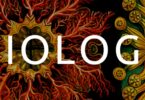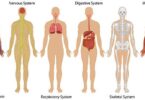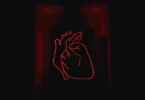The term “phylum” in animal classification was coined by
(a) E. Haeckel
(b) John Ray
(c) G.L. Cuvier
(d) Carolus Linnaeus
Species is
(a) Specific unit of evolution
(b) Specific unit in the evolutionary history of a race
(c) Specific class of evolution
(d) Not related to evolution
Which kingdom incorporates photoautotrophs, chemoautotrophs and heterotrophs
(a) Monera
(b) Protista
(c) Plantae
(d) Both (b) and (c)
Binomial nomenclature is
(a) Two words in name of a species
(b) Two names local and specific
(c) Two names of a species
(d) Two phases, asexual and sexual, in the life cycle of a species
The term species was coined by
(a) Aristotle
(b) Engler
(c) John Ray
(d) Linnaeus
Related: Chemical Equilibrium (Chemistry) Sample Paper
Modern system of classification classified organisms in ……. Kingdom
(a) One
(b) Two
(c) Four
(d) Five
Bacteria were first discovered by
(a) Robert Koch
(b) L. Pasteur
(c) Robert Hooke
(d) A.V. Leeuwenhoek
Bacterial ribosomes are present
(a) In cytoplasm
(b) On endoplasmic reticulum
(c) On nuclear membrane
(d) On cell wall
Branched chain lipids occur in the cell membranes of
(a) Archaebacteria
(b) Mycoplasma
(c) Actinomycetes
(d) Streptomyces
In E. coli when the flagella rotates in a clockwise and anticlockwise direction, the movements are
(a) Jumping and hooping
(b) Running and tumbling
(c) Tumbling and hooping
(d) Hooping and running
Related: Ray Optics (Physics) Sample Paper
Fimbriae are
(a) Organs of adhesion
(b) Antigenic
(c) Organs which form conjugation tube through which genetic material is transferred from donor to recipient cell
(d) All the above
Single filament of Nostoc without mucilage sheath is known as
(a) Hyphae
(b) Colony
(c) Trichome
(d) Mycilium
If a botanist has to nomenclate a similar species, he will use
(a) Syntype
(b) Neotype
(c) Mesotype
(d) Isotype
Which were the organisms who changed earth’s surface from reducing to the oxidizing
(a) Autotrophs
(b) Heterotrophs
(c) Photoautotrophs
(d) Chemotrophs
Cyanophyceae has got
(a) Definite nucleus and plastid
(b) No definite nucleus but plastid
(c) Neither definite nucleus nor plastid
(d) Definite nucleus but no plastid
Related: bone tissue quiz
A plant having vascular supply, producing spores but lacking seed is a
(a) Byophyte
(b) Pteridophyte
(c) Gymnosperm
(d) Angiosperm
Which of the following statements is right
(a) Fronds are found in bryophytes
(b) Multiciliate sperms are found in angiosperms
(c) Diatoms produce basidiospores
(d) Heterocysts are found in Nostoc
In Whittaker’s five kingdom classification, unicellular eukaryotes primarily aquatic and having various cell organelles constitute
(a) Monera
(b) Protista
(c) Animalia
(d) Plantae
Which of the following unicellular organism has a macronucleus for trophic function and one or more micronuclei for reproduction
(a) Euglena
(b) Amoeba
(c) Paramecium
(d) Trypanosoma
Natural Selection Theory of Darwin is objected to, because it
(a) Stresses upon slow and small variations
(b) Stresses upon interspecific competition
(c) Explains that natural calamities take a heavy annular toll of lives
(d) Explains, adaptation of certain inherited characters
Related: Redox Reactions (Chemistry) Sample Papers
‘Torula condition’ occurs in
(a) Rhizopus
(b) Ulothrix
(c) Spirogyra
(d) Riccia
The art of growing short plants is called
(a) Bonsai
(b) Horticulture
(c) Topiary
(d) Tissue culture
Flatworms are
(a) Acoelomates
(b) Pseudocoelomates
(c) Haemocoelomates
(d) Coelomates
VAM represents
(a) Saprophytic fungi
(b) Symbiotic fungi
(c) Saprophytic bacteria
(d) Symbiotic bacteria
Polystelic stem is seen in
(a) Cycas
(b) Riccia
(c) Selaginella
(d) Funaria
Agar–Agar is obtained from
(a) Gigartina
(b) Gelidium
(c) Gracillaria
(d) All the above
Related: boolean algebra questions and answers
All cells of sex organs are formed gametes in
(a) Algae
(b) Bryophyta
(c) Pteridophyta
(d) Gymnosperm
Two or more species occupying identical or overlapping areas are known as
(a) Sympatric species
(b) Allopatric species
(c) Sibling species
(d) Polytypic species
Red rust of tea is caused by
(a) Cephaleuros
(b) Synchytrium
(c) Mucor
(d) Fusarium
Meiotic division in zygote takes place in
(a) Thallophyta
(b) Angiosperms
(c) Gymnosperms
(d) Pteridophyta
Ligulate leaves are found in
(a) Mosses
(b) Selaginella
(c) Fern
(d) Pinus
In suborder ophidia, the vertebrae are
(a) Amphicoelus
(b) Acoelus
(c) Heterocoelus
(d) Procoelus
Related: digestive system questions
In Ulothrix, the cell contains
(a) A chloroplast with many pyrenoids
(b) A chloroplast with a few pyrenoids
(c) A few chloroplasts with a few pyrenoids
(d) Many chloroplasts with a few pyrenoids
Cataphylls are
(a) Leaves of Selaginella
(b) Scaly leaves of Pinus
(c) Needles of Pinus
(d) Foliar leaves of Pinus
Fern prothallus is
(a) Homothallic
(b) Heterothallic
(c) Heterotrophic
(d) eteromorphic
The living steady state has a self-regulatory mechanimsm which is
(a) Feedback mechanism
(b) Homeotherms
(c) Homozygous
(d) Homeostasis
Gametophytic generation is dominant in
(a) Pteridophyta
(b) Bryophyta
(c) Angiosperms
(d) Gymnosperms
Related: Thermodynamics physics questions
Leafy gametophyte is formed from protonema in
(a) Marchantia
(b) Riccia
(c) Funaria
(d) Anthoceros
Prodigality of reproduction in darwinism refers to
(a) Every organism produces numerous offspring
(b) Successful organism produce numerous offspring
(c) Only a few individuals are able to reproduce
(d) Only a few individuals are able to survive
In archegonium of moss (Funaria) plant, the number of neck canal cells is
(a) 2
(b) 3
(c) 5
(d) 6 to 18
Female sex organ in Funaria is called
(a) Paraphysis
(b) Oospores
(c) Archegonium
(d) Artheridium
Which of the following stage of Funaria is haploid
(a) Gametophyte
(b) Sporophyte
(c) Both (a) and (b)
Riccia gametophyte develops from spore and ends in
(a) Thallus
(b) Capsule
(c) Zygote
(d) Spore
Related: quiz on mitosis
An archegonium of Riccia has
(a) 4 neck canal cells, 1 venter canal cell and one oosphere
(b) 4 neck canal cells, 2 venter canal cells one oosphere
(c) 4 neck canal cells, one venter canal cell and two oospheres
(d) 6 neck canal cells, 2 venter canal cells and one oosphere
Heterospory is production of
(a) Sexual and asexual spores
(b) Large and small spores
(c) Haploid and diploid spores
(d) Diploid and tetraploid spores
Fern’s prothallus normally is
(a) Haploid
(b) Diploid
(c) Triploid
(d) Tetraploid
Meristeles are found in
(a) Cycas stem
(b) Pinus needle
(c) Fern leaf
(d) Fern rhizome
The number of spores in the sporangium of fern is
(a) 16
(b) 32
(c) 64
(d) 128
Related: Hybridization quiz
The gametophyte of fern bears
(a) True roots
(b) Antheridia
(c) Archegonia
(d) Both (b) and (c)
Protonema stage is found in
(a) Ferns
(b) Mosses
(c) Liverworts
(d) Fungi
Pteridium possess
(a) Polycyclic dictyostele
(b) Actinostele
(c) Siphonostele
(d) Amphiphloic siphonostele
Brown hair found at the base of Pteris leaves are
(a) Modified stipules
(b) Modified leaflets
(c) Ramenta
(d) Spines
Selaginella has the character of evolutionary importance. That character is
(a) Ligule
(b) Seed
(c) Heterospory
(d) Strobilus
Related: questions on permutations
The number of male prothellial cells in Selaginella are
(a) One
(b) Two
(c) Four
(d) Nil
Heteromorphic alternation of generations is found in
(a) Spirogyra
(b) Mucor
(c) Selaginella
(d) Pinus
Red wood tree is
(a) Cedrus
(b) Pinus
(c) Dalbergia
(d) Sequoia
In gymnosperms, pollen drop is the
(a) Red drop
(b) Pollens droped by wind
(c) Secretion of nucellus
(d) Water drops
In Pinus seeds there are
(a) Two cotyledons
(b) One cotyledon
(c) Fleshy cotyledons
(d) Many cotyledons
Related: cells structure and function questions worksheet
The edible part of seed of Pinus is
(a) Epispore
(b) Endosperm
(c) Perisperm
(d) Pericarp
The winged pollen grain of Pinus sp. are produced in
(a) Pollen chamber
(b) Anther
(c) Tapetum
(d) Microsporangium
A microsporophyll in Pinus has
(a) One microsporangium on the adaxial side
(b) One microsporangium on the abaxial side
(c) Two microsporangia on the abaxial side
(d) Two microsporangia on the adaxial side
In which of the following taxonomy, is equal weightage given to each of thousands of characters that a taxon exhibits
(a) Classical taxonomy
(b) Chemotaxonomy
(c) Numerical taxonomy
(d) Alpha taxonomy
In coelenterates, characteristic larva is
(a) Planula
(b) Rhabiditiform
(c) Oncosphere
(d) Cysticercus
Related: quiz questions Physics
High energy phosphate bond is present in
(a) ADP
(b) Adenosine
(c) AMP
(d) Cyelic AMP
Gram –ve and +ve bacteria have cell membrane made up of
(a) Proteins and lipids
(b) Cellulose
(c) Fats
(d) Chitin
Transfusion tissue, a modified vascular tissue is present in the leaves of
(a) Pinus
(b) Dryopteris
(c) Lycopodium
(d) Dalbergia
Which of the following is considered as more evolved
(a) Dicot plant
(b) Monocot plant
(c) Data are incomplete
(d) Both (a) and (b)
Pinus male and female reproductive structures occur
(a) On different plants
(b) On same branch
(c) On different branches of the same plant
True coelom is covered by
(a) Mesoderm
(b) Ectoderm and endoderm
(c) Ectoderm
(d) Endoderm
How has the free O2 been released into the earth’s atmosphere whereas there was no free O2 at the time of origin of life?
(a) By catabolic activity of animals
(b) By photosynthetic activity
(c) By heating of the Earth
Related: the nervous system quiz
Speciation is caused by
(a) Ecological isolation
(b) Geographical isolation
(c) Reproductive isolation
(d) Isolation
“Venus flower basket” is the name of the dried skeleton of
(a) Euspongia
(b) Euplectella
(c) Spongilla
(d) Leucosolenia
Which of the following is boring sponge
(a) Cliona
(b) Chalina
(c) Euplectella
(d) Ingested and thrown away by ostia
Glass Rope sponge is
(a) Hyalonema
(b) Euplectella
(c) Scypha
(d) Spongilla
Which of the following do not have polyp form
(a) Hydrozoa
(b) Scyphozoa
(c) Anthozoa
(d) All the above
Related: alkane quiz
In which phylum nerve cells are found but nerves are absent
(a) Porifera
(b) Coelenterata
(c) Platyhelminthes
(d) Nemathelminthes
Gastrodermis of Hydra takes part in digestion of
(a) Carbohydrates and fats
(b) Proteins and fats
(c) Proteins, fats and some carbohydrates
(d) Proteins and carbohydrates
Nematocysts are activated by
(a) Water
(b) Touch
(c) Brain
Germ cells of Hydra are derived from
(a) Ectoderm
(b) Endoderm
(c) Mesoderm
(d) Mesogloea
Ctenophores have similarities with members
(a) Porifera
(b) Coelenterata
(c) Arthropoda
(d) Annelida
Ctenophores have similarities with members
(a) Porifera
(b) Coelenterata
(c) Arthropoda
(d) Annelida
Related: mental health trivia questions
Pseudocoelom is not found in
(a) Ascaris
(b) Ancylostoma
(c) Fasciola
Transfer of Taenia to secondary host occurs as
(a) Onchosphere
(b) Cysticercus
(c) Morula
(d) Egg
Both alternation of generations and alternation of hosts are present in
(a) Wuchereria
(b) Fasciola
(c) Taenia
(d) Ascarils
Cercaria stage of Fasciola hepatica leads to
(a) Sporocyst
(b) Redia
(c) Miracidium
(d) Metacercaria
Among the following is a freeliving flatworm
(a) Taenia
(b) Fasciola
(c) Schistosoma
(d) Planaria
Related: Equilibrium Sample Paper (Chemistry)
One of the following organisms has a saprophytic mode of nutrition. This organism is:
(a) mushroom
(b) malarial parasite
(c) leech
(d) lice
Tailed bacteriophages are
(a) Motile on surface of bacteria
(b) Non-motile
(c) Actively motile in water
(d) Motile on surface of plant leaves
Excretory pores present in Ascaris are
(a) One
(b) Two
(c) One pair
(d) Two pairs
Two of the following organisms have a holozoic mode of nutrition. This organisms are:
(a) Paramecium and Plasmodium
(b) Plasmodium and Parakeet
(c) Parakeet and Paramecium
(d) Paramecium and Parasite
Animal group with pseudocoelom is
(a) Echinoderms
(b) Molluscs
(c) Aschelminthes/Nematodes
(d) Annelids
Related: Surface chemistry mcq
Which one of the following phylum is characterized by the absence of a true coelom
(a) Echinodermata
(b) Mollusca
(c) Annelida
(d) Nematoda
Annelids are
(a) Radially symmetrical
(b) Externally segmented
(c) Triploblastic
(d) Pseudocoelomate
Hearts of Pheretima are situated in the segments
(a) 10, 13, 16 and 17
(b) 7, 9, 12 and 13
(c) 4, 5, 10 and 13
(d) 11, 14, 17 and 18
In Pheretima oxygen carrying haemoglobin occurs in
(a) Corpuscles
(b) Plasma
(c) Both corpusscles and plasma
(d) The statement is wrong
Which one assists in locomotion?
(a) Trichocysts in Paramecium
(b) Pedicellariae of Star Fish
(c) Clitellum in Pheretima
(d) Posterior sucker in Hirudinaria
Nephrostome occurs in
(a) Septal nephridia
(b) Integumentary nephridia
(c) Pharyngeal and septal nephridia
(d) Pharyngeal and integumentary nephridia
Blood vessel in Pheretima having valves is
(a) Dorsal
(b) Ventral
(c) Lateral
(d) Integumentary
Related: Biomolecules test questions
Phaosome in Earthworm is
(a) Lens
(b) Pigment
(c) Nephridium
(d) Hormone
In earthworm, paired spermatheca are found in
(a) 4th to 7th segments
(b) 5th to 8th segments
(c) 6th to 9th segments
(d) 7th to 10th segments
Which one illustrates palaeontological evidence in favour of oraganic evolution?
(a) Duck bill platypus
(b) Pappered moth
(c) Archaeopteryx
(d) Darwin’s finches
For seeing a haemocoel which animal you will select
(a) Earthworm
(b) Hydra
(c) Sponge
(d) Scolopendra
Mouth parts of a butterfly are of type
(a) Sponging
(b) Siphoning
(c) Piercing and sucking
(d) Chewing and sucking
Casting off of old skeleton during growth of an animal is
(a) Skinning
(b) Moulting
(c) Ecdysis
(d) Both (b) and (c)
Wings are vestigial in Cockroach
(a) Female Blatta orientalis
(b) Male Blatta orientates
(c) Male Periplanata Americana
(d) Female Periplanata americana
Related: iupac nomenclature exercises
Metamorphosis of insects is regulated through hormone
(a) Pheromone
(b) Thyroxine
(c) Ecdysone
(d) All the above
Difference between male and female Anopheles occurs in
(a) Proboscis
(b) Wings
(c) Antennae
(d) Size
Difference between male and female Anopheles occurs in
(a) Proboscis
(b) Wings
(c) Antennae
(d) Size
Corpora allata are removed from a nymph. It will
(a) Remain nymph for life
(b) Become adult
(c) Change to next nymph immediately but will remain in that state
(d) Die after some time
Hard exoskeleton cephalothorax and gills for respiration are characteristics of
(a) Insecta
(b) Myriapoda
(c) Polychacta
(d) Crustacea
Wriggler is the larva of
(a) Cockroach
(b) Mosquito
(c) Butterfly
(d) Housefly
Salivary duct of Cockroach opens at
(a) Hypopharynx
(b) Epipharynx
(c) Left mandible
(d) Right mandible
Related: Physics questions on work energy and power
From the following statements select the wrong one
(a) Prawn has two pairs of antennae
(b) Nematocysts are characteristics of the phylum cnidaria
(c) Millepedes have two pairs of appendages in each segment of the body
(d) Animals belonging to phylum porifera are exclusively marine
In molluscs, the respiratory pigment is
(a) Haemoglobin
(b) Hamocyanin in the blood cells
(c) Myoglobin
(d) Haemocyanin in the blood plasma
Which one occurs in mollouscs but not in echinoderms
(a) Flame cells
(b) Malpighian tubules
(c) Kidney
Ospharidium is meant for
(a) Excretion
(b) Nutrition
(c) Selection and rejection of food
(d) Grinding of food
Main function of pedicellariae in Asterias is
(a) Digestion
(b) Excretion
(c) Respiration
(d) Capture of prey and removal of debris
Absence of excretory organs, great power of regeneration and exclusively marine animals belong to the phylum
(a) Mollusca
(b) Echinodermata
(c) Fishes
(d) Arthropoda
Related: calorimeter questions
Notochord is restricted to the anterior part of body proboscis in animals of which group
(a) Hemichordata
(b) Urochordata
(c) Cephalochordata
(d) Chordata
In which of the following the notochord is present in embryonic stage
(a) Vertebrates
(b) Some chordates
(c) All chordates
(d) Non-chordates
The most important distinctive character of chordata is the presence of
(a) Vertebral column
(b) Hairy skin
(c) Notochord
(d) All the above
The cell theory was proposed by
(a) Metchnikoff
(b) August Weismann
(c) Sutton and Boveri
(d) Schleiden and Schwann
Absence of thumb is characteristic of
(a) Rabbit
(b) Man
(c) Frog
(d) Monkey
Axolotl larva belongs to the order
(a) Urodela
(b) Anura
(c) Apoda
(d) Stegocephalia
Related: amino acids structure quiz
The skull of frog is
(a) Tricondylic
(b) Monocondylic
(c) Dicondylic
(d) Noncondylic
Suctorial mouth occurs in
(a) Butterfly
(b) Taenia
(c) Leech
(d) Cockroach
Carapace is present in
(a) Toad
(b) Bird
(c) Frog
(d) Tortoise
Most dinosaurs became extinct during
(a) Late Triassic
(b) Late Jurassic
(c) Cretaceous
(d) Early Tertiary
Archaeopteryx called a connecting link, carried the characters of
(a) Reptile and bird
(b) Reptile and mammal
(c) Fish and amphibian
(d) Amphibian and reptile
Related: current electricity quiz
Most animals domesticated by man belong to the order
(a) Carnivora
(b) Rodentia
(c) Ungulata
(d) Lagomorpha
Earliest evidences of social life are attributed to
(a) Cro-Magnon man
(b) Neanderthal man
(c) Peking man
(d) Java man
The following is an example of saprophytes
(a) Mushroom
(b) Lichen
(c) Unicellular algae
(d) Ferns
Which of the following is a genetic vector?
(a) Phage
(b) Plasmid
(c) Mosquito
Which of the following groups have one or more animals which are not pseudocoelomate?
(a) Ascaris, taenia
(b) Enterobius, wuchereria
(c) Ancylostoma, dracunculus
(d) Ascaris, ancylostoma
Related: Alkaline Earth Metal chemistry quiz
Funaria is attached to substratum by
(a) Roots
(b) Rhizoids
(c) Haustoria
(d) Stem
Three generations one within the other are present in the seeds of
(a) Gymnosperms
(b) Dicots
(c) Monocots
(d) All the these
Which of the following is a distinct character?
(a) Chorda dorsalis
(b) Cephalization
(c) Claws
(d) Pharyngotomy
Which is the vestigial organ in man?
(a) Atlas
(b) Cervical vertebra
(c) Vermiform appendix
In which of the following jaws are found
(a) Herdmania
(b) Fish
(c) Petromyzon
Related: Gravitation (Physics) Sample Paper
Two similar holotypes are called
(a) Mesotypes
(b) Meotypes
(c) Syntypes
(d) Isotypes
Primitive conditions of earth were experimentally shown by
(a) Both Urey and Miller
(b) Urey
(c) Miller
Evolution means
(a) History of race
(b) Development of race
(c) History and development of race with variations
(d) Progressive development of the race
Linkage was first observed by
(a) Walter Sutton
(b) Gregor Mendel
(c) William Bateson
(d) Thomas Hunt Morgan
Coenobium means
(a) A hollow spherical colony
(b) A group of filaments
(c) Palmelloid form
Related: multiple choice questions on solutions chemistry
The enzyme DNA polymerase was discovered by
(a) Okazaki
(b) Kornberg
(c) Watson and Crick
(d) Stahl and Meselson
“Pangenesis hypothesis” was propounded by
(a) Galton
(b) Wagner
(c) Darwin
(d) Weismann
The interspersion of various degrees of chlorosis with the normal green colour of the leaf is called
(a) Spotting
(b) Yellowing
(c) Mosaic
(d) Rosetting
Who was the first to record EEG?
(a) Pavlov
(b) A.S. Hyman
(c) Einthoven
(d) Hans Berger
The most vital process for the existence of life on earth is
(a) Communication in animals
(b) Photosynthesis by plants
(c) Reproduction in plants and animals
(d) Respiration in animals
Amniocentesis is a technique used for
(a) Measuring size of foetus
(b) Determining sex of foetus
(c) Determining position of foetus
(d) Estimating amino acid content in the amnion
Sporophyte dependent upon gametophyte is found in
(a) Algae
(b) Fungi
(c) Bryophytes
(d) Pteridophytes
5 Radial symmetry occurs in
(a) Fishes
(b) Molluscs
(c) Star Fishes
(d) Sponges
Glycogen is most structurally similar to
(a) Glucose
(b) Starch
(c) Maltose
(d) Cellulose
Who first discovered fossils of ‘Ramapithecus’?
(a) Dubois
(b) R. Dart
(c) G.E. Lewis
(d) J.K. Fuhlort
The process of obtaining food by Amoeba is known as:
(a) dialysis
(b) cytokinesis
(c) phagocytosis
(d) amoebiasis
In Bryophyta the adult plant body is
(a) Sporophyte
(b) Epiphyte
(c) Sporophyll
(d) Gametophyte
Which of the following is a saprophytic angiosperm?
(a) Cuscuta
(b) Neottia
(c) Agaricus
(d) Mango
Prototherians have evolved from
(a) Reptiles
(b) Birds
(c) Eutherians
(d) Amphibians
‘Vestigial organs’ are those organs which are
(a) Characteristics of birds
(b) Not of much use today
(c) Helpful in locomotion
(d) Common







God knows what will happen to medical students